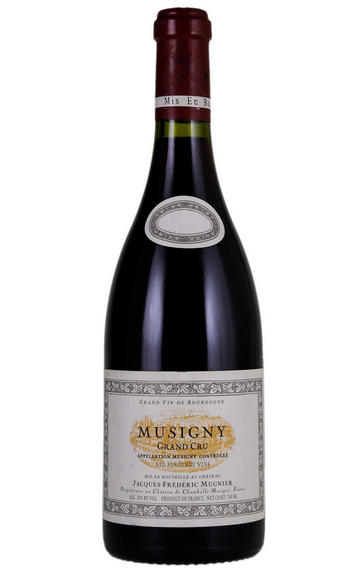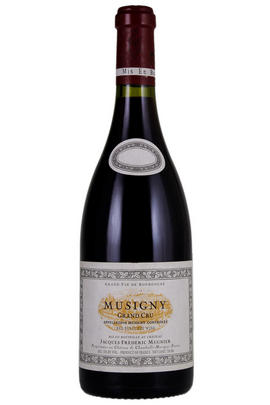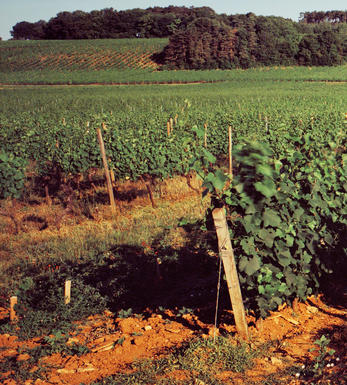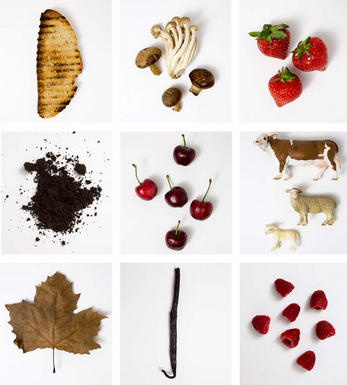
2011 Musigny, Grand Cru, Jacques-Frédéric Mugnier, Burgundy

Critics reviews
In somewhat stark contrast to the Amoureuses, there is a lovely freshness to the ripe but airy nose that is wonderfully broad with its red and black currant, violet and exotic tea aromas. There is a brilliant mouth feel as the structured yet incredibly fine large-scaled flavours convey a real sense of power and muscle, but it's delivered with the grace of a ballerina on the hugely long mocha-infused finish. This reminds me a bit of the 2000 Musigny that drank well young and is still drinking well today.
Drink from 2023 onward
Allen Meadows, Burghound.com (January 2014)
The embodiment of pure sensuality, the 2011 Musigny is supremely beautiful. Balance, symmetry and a total sense of finesse are the calling cards. The silkiest of tannins support a finish laced with bright red fruit, rose petals, spices and dried herbs.
Drink 2021 - 2036
Antonio Galloni, Vinous.com (March 2014)
The 2011 Musigny Grand Cru has a fragrant, floral, understated bouquet that is beautifully defined and focused. With time in the glass, it offers subtle forest floor and damp soil scents that merely add to its complexity.
The palate is medium-bodied with filigree tannins and exquisite balance. It tiptoes across the senses rather than delivering a payload of flavours, while the finish offers extraordinary precision and nuance.
It is a long-term wine of immense density – deceptively so.
Neil Martin, Wine Advocate (October 2013)
Deep, bright red. Closed but pure nose hints at pepper, spices, herbs and soil. It is tougher and less fruity than the Bonnes-Mares, with more obvious tannins currently cutting off the wine's finish. Distinctly darker in character than the Amoureuses, the notes of spices, herbs and pepper carried through on the palate and the powerful, firmly tannic aftertaste.
Quite uncompromising today but vibrant and very young.
Stephen Tanzer, Vinous.com (March 2014)
About this WINE

Domaine Jacques-Frederic Mugnier
Domaine Jacques-Frédéric Mugnier is based at the Château de Chambolle-Musigny, which has been in the Mugnier family since 1863. Frédéric Mugnier – the fifth generation of the family on the property – took over in 1985. As of 2004, he has reclaimed the Nuits-St Georges Clos de la Maréchale vineyard, which had been on lease to Faiveley since 1950.

Chambolle Musigny
Chambolle produces the most elegant wines in the Côte de Nuits, having more active chalk and less clay in the soil than the other villages. The wines may be a little lighter in colour and less tannic than Gevrey-Chambertin but they have a sublime concentration of fruit. Village Chambolle-Musigny usually provides excellent value.
Le Musigny is one of the top half-dozen vineyards in Burgundy, producing wines of extraordinary intensity and yet with a magical velvety character. Les Amoureuses is immediately appealing, a wonderfully sensual wine which deserves Grand Cru status. Bonnes Mares tends to have a firmer structure and ages very well
- 94 hectares of village Chambolle-Musigny.
- 61 hectares of Premier Cru vineyards (24 in all). The finest vineyards include Les Amoureuses, Les Charmes, Les Fuées, Les Baudes and Sentiers.
- 24 hectares of Grand Cru vineyard - Bonnes Mares and Le Musigny.
- Recommended producers: de Vogüé, Mugnier, Roumier, Barthod.
- Recommended restaurant: Le Chambolle

Pinot Noir
Pinot Noir is probably the most frustrating, and at times infuriating, wine grape in the world. However when it is successful, it can produce some of the most sublime wines known to man. This thin-skinned grape which grows in small, tight bunches performs well on well-drained, deepish limestone based subsoils as are found on Burgundy's Côte d'Or.
Pinot Noir is more susceptible than other varieties to over cropping - concentration and varietal character disappear rapidly if yields are excessive and yields as little as 25hl/ha are the norm for some climats of the Côte d`Or.
Because of the thinness of the skins, Pinot Noir wines are lighter in colour, body and tannins. However the best wines have grip, complexity and an intensity of fruit seldom found in wine from other grapes. Young Pinot Noir can smell almost sweet, redolent with freshly crushed raspberries, cherries and redcurrants. When mature, the best wines develop a sensuous, silky mouth feel with the fruit flavours deepening and gamey "sous-bois" nuances emerging.
The best examples are still found in Burgundy, although Pinot Noir`s key role in Champagne should not be forgotten. It is grown throughout the world with notable success in the Carneros and Russian River Valley districts of California, and the Martinborough and Central Otago regions of New Zealand.


Buying options
Add to wishlist
Description
In somewhat stark contrast to the Amoureuses, there is a lovely freshness to the ripe but airy nose that is wonderfully broad with its red and black currant, violet and exotic tea aromas. There is a brilliant mouth feel as the structured yet incredibly fine large-scaled flavours convey a real sense of power and muscle, but it's delivered with the grace of a ballerina on the hugely long mocha-infused finish. This reminds me a bit of the 2000 Musigny that drank well young and is still drinking well today.
Drink from 2023 onward
Allen Meadows, Burghound.com (January 2014)
wine at a glance
Delivery and quality guarantee